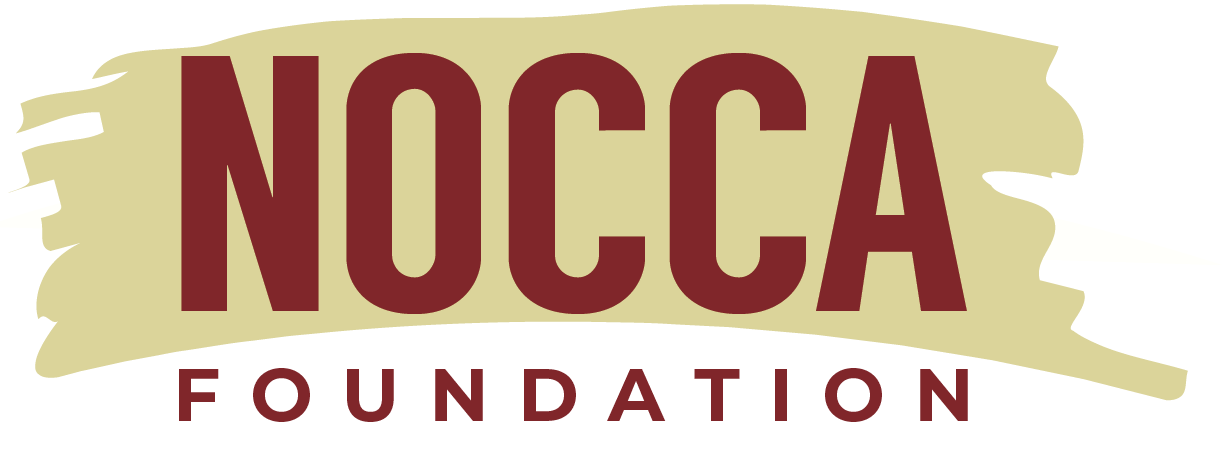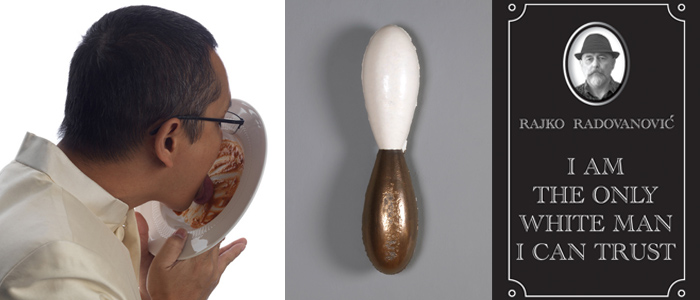Please join us at NOCCA on Thursday, January 12 for the opening reception of the 2012 Visiting Artists Exhibit. The show features two- and three-dimensional work by Willie Birch, Sesthasak Boonchai, Sally Brogden, and Rajko Radovanovic. The opening reception runs from 6pm to 8pm in the Ken Kirschman Artspace, and the exhibit continues through February 24, 2012.
NOCCA is located at 2800 Chartres Street, in New Orleans’ historic Faubourg Marigny neighborhood. Gallery hours are Monday through Friday from 9am to 1pm, and Saturday from 12pm to 4 pm. Admission is free.
BIOS
Willie Birch
A native of New Orleans, Willie Birch creates politically incisive yet emotionally sensitive work that addresses issues related to African American culture and survival. Always probing in his work, the artist has addressed New Orleans musical heritage and also the multi-layered experience of African American males. Willie Birch’s work has powerful political, sociological, and spiritual meaning but is wonderfully anchored in the daily life and celebratory rituals and recently even the fauna of the artist’s 7th Ward New Orleans neighborhood.
Sesthasak Boonchai
Sesthasak Boonchai is an artist and educator, whose work runs the gamut from drawing to photography to installation. Throughout his works, Sesthasak’s focus is a meditation on the relationships between humans and the spaces they inhabit. He studies the remnants and histories our detritus. Be it physical, mental, or psychological, he to tries to connect the idiosyncratic links between objects, corners, candies, and pop songs. Sesthasak has taught at NOCCA, Delgado College and the University of New Orleans. His work has been featured in exhibitions at The Mississippi Museum of Art, The New Orleans Museum of Art, The Ogden Museum of Southern Art, Colorado Springs Fine Arts Center, Los Angeles Center for Digital Art and Tulane University. He has also had a number of solo exhibitions throughout the United States. Currently he divides his time between New Orleans and New York and is a faculty member at The School of Visual Arts.
Sally Brogden
Sally currently lives and works in Knoxville, Tennessee, where she is Professor of Art at the University of Tennessee. She has a BFA and an AB in Art History from the University of Michigan and an MFA from the New York State College of Ceramics. Her work has been exhibited throughout the U.S. and abroad. Sally was one of fifty artists selected for the exhibition Taking Measure: American Ceramic Art at the New Millennium, curated for the world ceramics conference in Yeoju, Korea. She has been the recipient of numerous grants and has been an artist in residence at the Ceramic Center Berlin and the Archie Bray Foundation, where she now serves on the Board of Directors. Her work has been included in numerous books and catalogs including: Ceramics: A Potter’s Handbook, The Craft and Art of Clay, A Ceramic Continuum: Fifty Years of the Archie Bray Influence, Taking Measure: American Ceramic Art at the New Millennium and 500 Ceramic Sculptures. Recent exhibitions include: Islip Art Museum, East Islip, NY; Holter Museum, Helena, MT; Ceramic Center Berlin, Berlin, Germany; Santa Fe Clay, Santa Fe, NM; Vertigo Gallery, Denver, CO; Lewis and Clark College, Portland, OR; Maryland Arts Council, Baltimore, MD; Phillips Museum of Art, Franklin & Marshall College, Lancaster, PA; Belger Art District, Kansas City, MO; and the Ichon World Ceramic Center, Kyonggii Province, Korea.
Rajko Radovanovic
Rajko was born in 1954 in Yugoslavia and has lived and made art in New Orleans since 2009. He has previously held residence in Brighton, Manchester, and London (United Kingdom), and Zagreb (Croatia). His work has been represented in well over 150 exhibitions including shows in the UK, Austria, Germany, the Netherlands, Sweden, Serbia, Croatia, Bosnia/Herzegovina, Italy, Poland, and the USA. The work itself ranges across media including video, performance, installation, photography, painting, sculpture and artist’s publications. After the collapse of the Berlin Wall, the disintegration of Soviet Union, and the violent break-up of Yugoslavia, Rajko used his work to explore the mechanisms of individual and collective traumas within transitional, post-socialist societies. This resulted in a series of work which explored people’s moral standards and their requisite modification which allowed universal acceptance of violence towards their fellow citizens.

